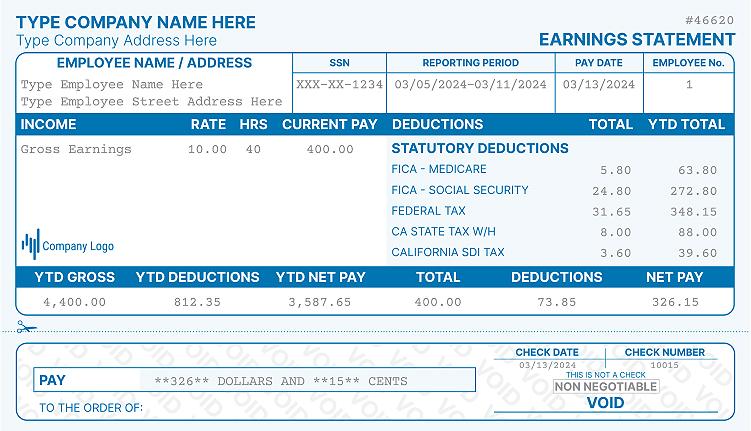Imputed Income: What it is and how it is calculated
We know it is difficult to understand how to calculate payroll taxes, but what’s more difficult is the calculation of pre-tax and post-tax deductions. Imputed income is a significant part of these taxes.
While filing a tax return, you often get stuck on some points. And that main point is imputed income. Since employees aren’t paying for the product, you often forget to deduct tax from them (if you are doing payroll yourself).
But the times of worry are long gone because we have brought forth the best post providing details on imputed income. So let’s get right into it.
What is Imputed Income?

When you hear the word "imputed income," you might consider it something you must provide the employee with. This statement is somewhat true. However, the definition of imputed income is not so small.
Imputed income is the term used for the benefits your employees enjoy without you cutting a single buck from their wages or salaries (such as access to a gym (gym membership) and a company car). However, when filing taxes, a part is cut from their income. Even though the employee does not pay for these benefits, they are still subject to tax on their value.
If you take the example of a company car, the employee will not pay for the car itself. However, when it comes to the lease on the car, the employee will pay a part of it. Employers offer a few benefits, like meals and health insurance, that are exempt from taxation.
Another way to describe imputed income for employees is:
Any service or benefit that you do not pay for (counts as income) is brought down in the income section. When paying the FICA or federal taxes, the tax will be applicable in the same way on these services or benefits as on your normal income.
However, these calculations are not part of your gross pay. However, they do count in the gross taxable earnings.
If you still need clarification regarding the explanation of imputed income, the following example will help you understand it. Moreover, we will also list the method for calculating imputed income.
Example of Imputed Income
Returning to your college days, you will see how examples made everything a piece of cake. So here is our effort to help turn the not-so-easy topic of imputed income into a piece of cake with the help of an example.
We are all aware of fringe benefits. A fringe benefit is a well-known term, whether you are an employee or employer. So, fringe benefits are a significant part of imputed income.
As an employee, you do not have to pay for these benefits. However, when the employer files taxes, he deducts a part of your income. But one thing you must remember in the case of fringe benefits is that the tax you pay on these benefits depends on the extent of usage. But when it comes to other benefits, the monetary amount becomes a thing of the past.
You will have to pay tax equally as other employees, no matter to what extent you benefited from it. To help you understand this, we will list some examples of benefits here.
- Employer car or company car usage
- Employer-paid health insurance (only for non-dependants)
- Gym membership and other fitness benefits
- Life insurance (in case the value goes above fifty thousand dollars)
- Education benefits above five thousand dollars
- Employer gifts
- Company moving rate
These are just a few examples of imputed income. The list goes on depending on the type of benefits the employer provides and the benefits the employee enjoys.
What is Excluded from Imputed Income?
Not all benefits are part of imputed income. The majority of such benefits are those that are below a certain value. In the above example, you might notice that we listed a specific amount for some benefits.
Why? Because they are below that value, the benefits do not count as imputed income. So here are some notable examples of benefits that are not a part of imputed income.
- Dependant’s health insurance
- Life insurance of fewer than fifty thousand dollars
- Education benefits less than five thousand dollars
- Small gifts for employee
- Health account
- Care assistance (dependant) less than five thousand dollars
We hope it is clear from the above examples that the benefits and services are not part of imputed income.
How to Calculate Imputed Income?

For reporting imputed income, the W-2 or IRS form is well-known. The steps to calculating imputed income are more straightforward than the term may seem. However, whether you are an employee or an employer, you must be careful about the calculations.
Why? Because one wrong move can land you in court. But don’t worry, nothing bad will happen if you follow the steps.
- Note down the fringe benefits.
- Make two columns of taxable and non-taxable fringe benefits
- Using your W-2 or IRS form, add the imputed income of the employee
- You have your imputed income.
If you want to pay the tax on this income, you must calculate it according to the current FUTA and FICA taxes and recent changes on 2023 FICA limits.
Where Can I Find Imputed Income on My Paycheck?
Imputed income is not part of your paycheck. Although the tax is paid from your income, the imputed income can only be seen on the W-2 form. As the tax on this income is a part of the federal income tax, you can see your imputed income at the end of the W-2 form.
What is the Effect of Imputed Income on Taxes and Tax Returns?
Imputed income affects your tax calculation and tax returns to a great extent. The main effect of imputed income is on taxable gross income. They add to this gross income, as a result of which the gross income increases (and becomes taxable).
When the time arrives for tax returns, this income becomes subject to FICA, state, and federal taxes. One must do the calculations accordingly while considering the benefits to which the monetary amount is applicable.
Is Imputed Income Good or Bad?
The answer to this question is both good and bad. Why? Look, you are enjoying some benefits without paying for them. Isn’t it good? So if you look at the scenario, everything seems fair and reasonable.
However, when you move a bit further, the tax comes in. The employee has to pay a part of the taxes on the fringe benefits they enjoy. And this is where things are suitable for the employer but not the employee.
Honestly, it is an honest game that both parties enjoy. However, the imputed income benefits the employee more than the employer.
So it comes down to which side you belong to and what you prefer.
Frequently Asked Questions (FAQs)
How do you report imputed income for employees?
You can report this for employees using the W-2 or IRS form.
Why is imputed income deducted from your paycheck?
The imputed income is deducted from your paycheck because the employer must withhold employment taxes.
Does imputed income affect my gross income?
No, imputed income does not affect your gross income. However, it does affect your taxable gross income.
What are fringe benefits?
Fringe benefits are those that the employee enjoys without paying for them. However, the tax on these benefits is part of the employee's paycheck.
Do employee stipends count as imputed income?
No, in most cases, employee stipends do not count as imputed income.
Final Thoughts on Imputed Income and Its Impact on Paychecks
Imputed income is something that must always be included in federal taxes. Although the employees enjoy the benefits, they have to pay taxes too. The topic of imputed income is quite complicated.
However, if you feel this article did not clarify your doubts regarding imputed income, you can contact any tax dealer for details.
Kristen Larson is a payroll specialist with over 10 years of experience in the field. She received her Bachelor's degree in Business Administration from the University of Minnesota. Kristen has dedicated her career to helping organizations effectively manage their payroll processes with Real Check Stubs.

